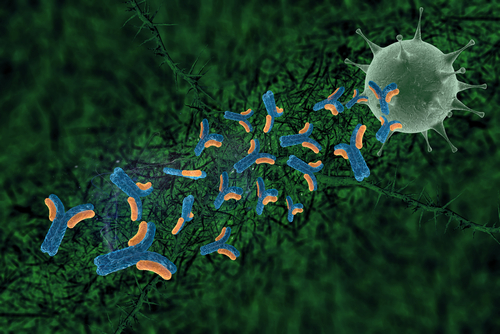Sjögren Patients with Highly Active Disease at Risk of Condition with Ties to Blood Cancer, Study Says

Monoclonal gammopathy, a condition marked by an unusual protein produced in plasma cells and one that can progress to a blood cancer, is evident in patients with Sjögren syndrome and certain other rheumatic diseases, a Chinese study found.
Sjögren patients with highly active disease are more likely to develop this disorder, the researchers added.
Their study, “Monoclonal gammopathy in rheumatic diseases,” was published in the journal Clinical Rheumatology.
Monoclonal gammopathy (MG) of unknown significance is characterized by the presence of an abnormal antibody-related protein (M protein) in the blood, produced by the immune cells that normally produce antibodies.
In most cases, monoclonal gammopathy is considered a benign condition. But in rare cases it can progress to certain blood cancers, including multiple myeloma, Waldenström macroglobulinemia, and lymphoma.
MG can also be associated with rheumatic diseases such as Sjögren syndrome, but its role in the development of malignancies in these patients is controversial. Previous research found an increased risk of lymphoma in rheumatic patients with MG, but findings regarding a myeloma risk are unclear.
Researchers in China examined the clinical manifestations, disease activity, and the prevalence of blood cancers in patients with rheumatic diseases and MG, with the goal of identifying clinical clues for risk factors linking monoclonal gammopathy and cancer that might aid in early diagnosis.
The study included 41 patients hospitalized at the Peking University People’s Hospital in Beijing. All were diagnosed with a rheumatic disease and with MG, after testing for the M protein in the blood and urine, from 2010 to 2017.
Rheumatic disorders in these patients included Sjögren syndrome — the most common, diagnosed in 12 people or 29% of the 41 patients — rheumatoid arthritis, systemic lupus erythematosus, and ankylosing spondylitis.
Most patients had abnormal laboratory analysis related to a problematic immune system: high erythrocyte sedimentation rate (ESR), inversion of the albumin/globulin (A/G) ratio, positivity for rheumatoid factors (RF), hypergammaglobulinemia, and hypocomplementemia (low levels of complement factors, elements of the immune system).
Researchers also compared Sjögren’s patients with MG to those without this condition.
Both groups were identical in clinical manifestations, but patients with MG more often showed troubling levels of an enzyme in their urine known as NAG, an indicator of kidney damage; had higher levels of erythrocyte sedimentation rate, and greater disease activity, as measured by the EULAR Sjögren Syndrome Disease Activity Index (ESSDAI) and Clinical ESSDAI (ClinESSDAI) scores. Both are standard tools for assessing disease activity in primary Sjögren syndrome patients.
Analysis revealed that high disease activity, irrespective of the score used to assess it, was the only independent risk factor for the presence of MG.
Seven (17.1%) of the 41 Sjögren-MG patients also had a blood cancer. The most common was multiple myeloma (four people), followed by smoldering multiple myeloma in two patients, and one case of B-cell lymphoma of mucosa-associated lymphoid tissue (MALT).
The presence of M proteins’ “light-chain” in the blood was significantly linked with an increased risk of multiple myeloma but not of other blood cancers. The small number of patients in this group limited finding of more risk factors, the researchers noted.
“The presence of MG seems associated with higher disease activity of the underlying autoimmune process,” they wrote.
Given the presence of blood cancers in a considerable proportion of patients with MG, researchers recommend screening for MG and closely monitoring Sjögren and other rheumatic disease patients for possible cancer development.
“To facilitate an early diagnosis and timely intervention, we recommend the inclusion of MG screening in patients with rheumatic disorders especially when they exhibit a phenotype with high ESR, A/G inversion, RF positivity, hypergammaglobulinemia, hypocomplementemia, or renal injury of unknown reasons,” the team concluded.






